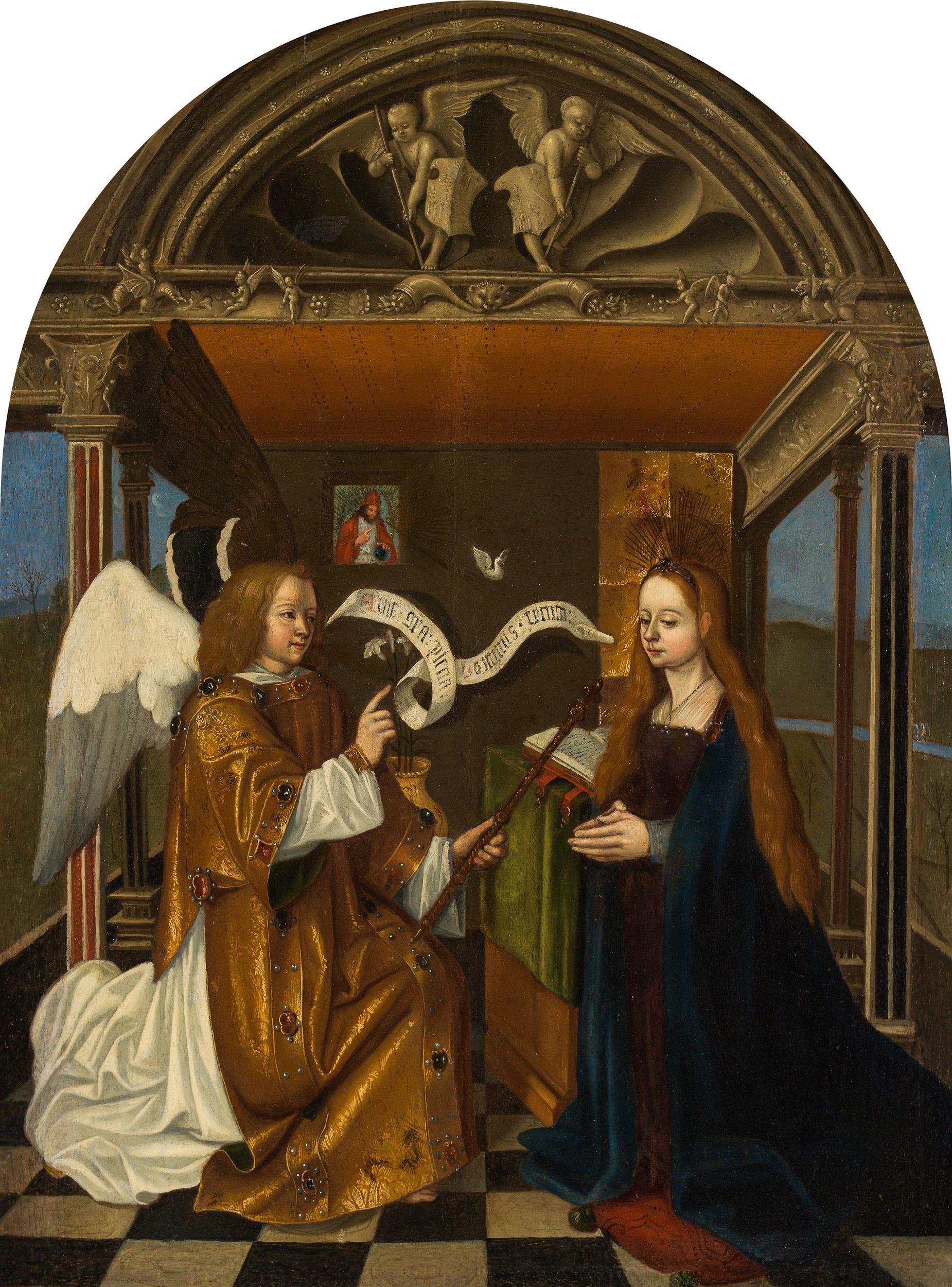1010
„Annunciation“
c. 1500
oil on panel; framed
67 x 48 cm (round-arched end)
Provenance
formerly collection Graf Limburg-Stirum (according to label on the reverse);
Galleria Gilberto Zabert, Turin, 1998;
since 2010 private property, Italy
Literature
Didier Bodart, in: Turin, Galleria Gilberto Zabert. Dipinti e sculture dal XIV al XIX secolo, 1998 (as Master of Saint-Jean-De-Luz, active c. 1475/80)
Estimate: € 20.000 - 40.000
Result: € 32.000 (incl. fees)
Auction is closed.
The charming panel captivates with its skilful interplay of the three classical art genres - painting, architecture, and sculpture merge on the smallest of surfaces. Thus, the Annunciation scene is located in a space-creating illusory architecture: Gabriel wears a gold-embroidered chasuble and kneels before the Virgin, who humbly listens to the Annunciation, represented by a scroll: 'Ave Maria, gratia plena; Dominus tecum'. The clear architecture opens up the pictorial space in perspective and demonstrates the endeavour to create a convincing effect of depth. The decorative architectural elements, the frieze populated with fanciful animals and the embellished lunette use Italian-inspired motifs, which had already spread north of the Alps in the 15th century. Especially the stone elements executed in grisaille combine painting and the three-dimensional arts.
The coats of arms carried by putti with identifiable Bourbon fleurs-de-lis also refer to the origin of the panel in the Franco-Flemish art world, in which the art of grisaille painting in particular had been cultivated since the first half of the 15th century. Examples of this can be found as early as Robert Campin (1375-1444) or Jan van Eyck (1390-1441), as well as later in the work of the Master of Moulins (exterior panel of the altar of Notre-Dame Cathedral, Moulins (Auvergne), c. 1497) or the Master of Saint Jean de Luze (portraits of Hugues de Rabutin and his wife Jeanne de Montaigu, c. 1470). Artistic exchange was lively at the time and the boundaries of attribution between northern France, Burgundy and Flanders were fluid.


